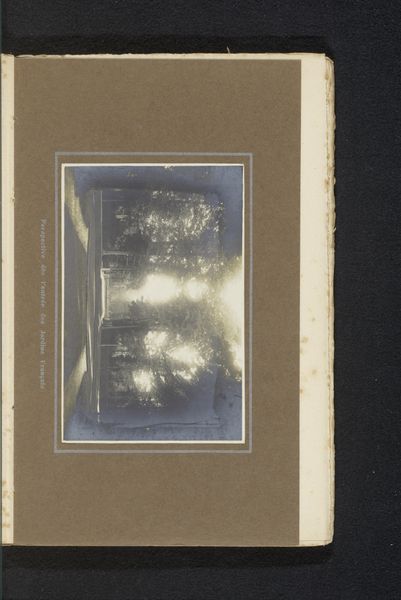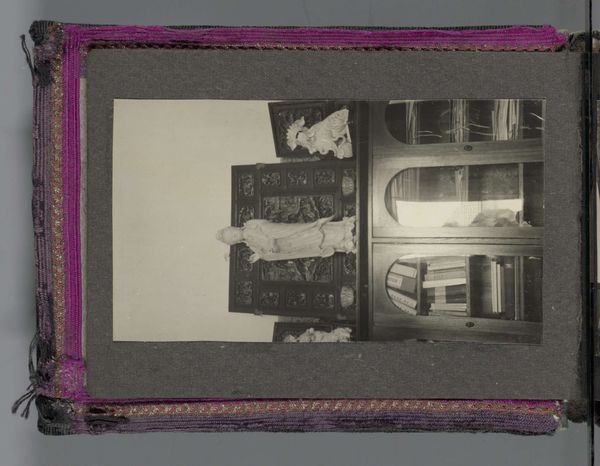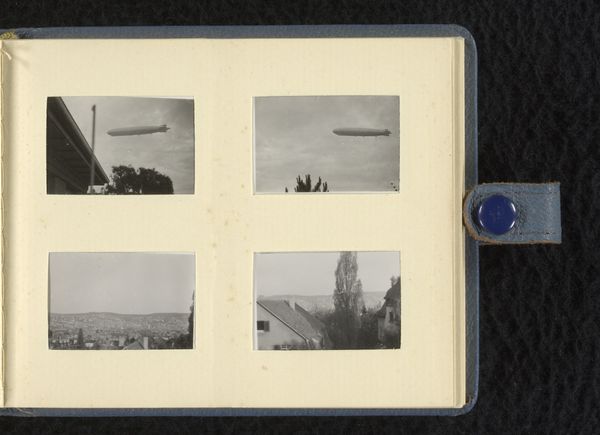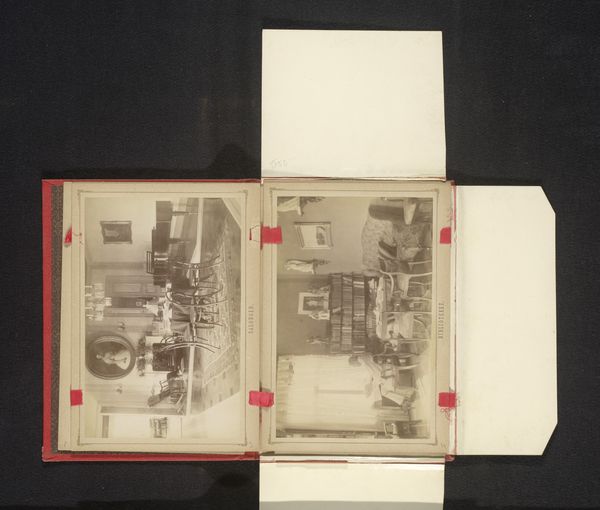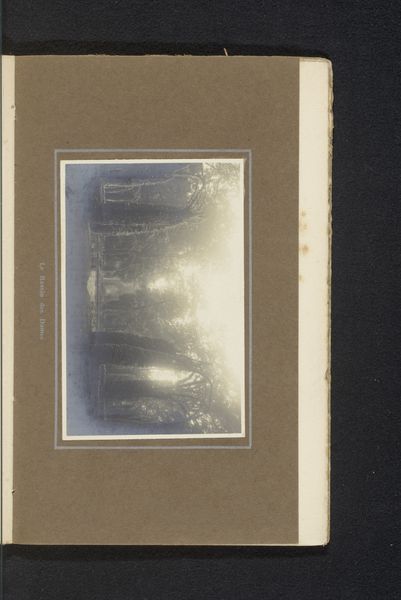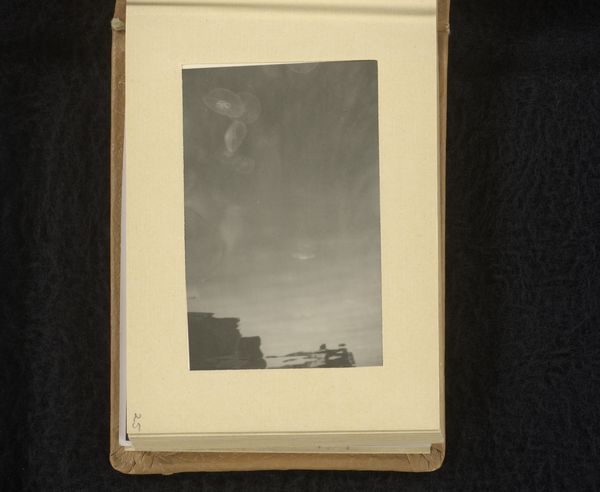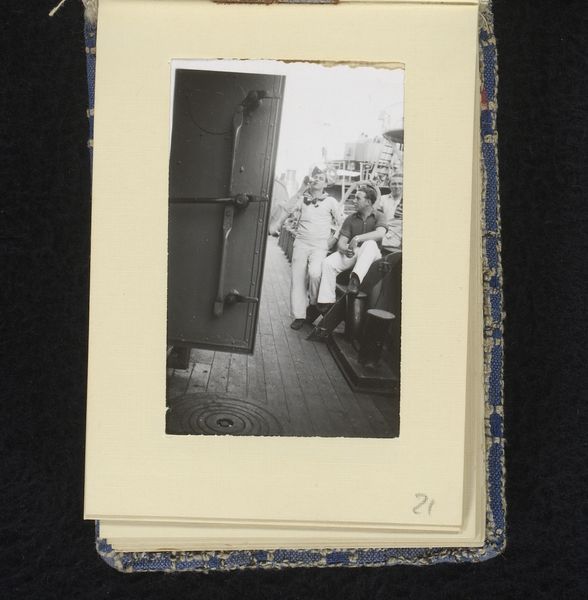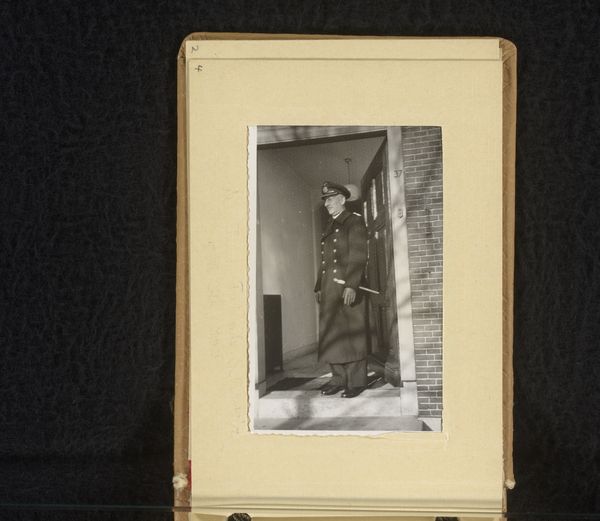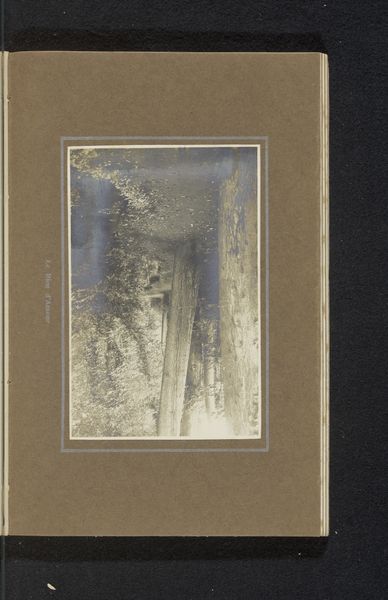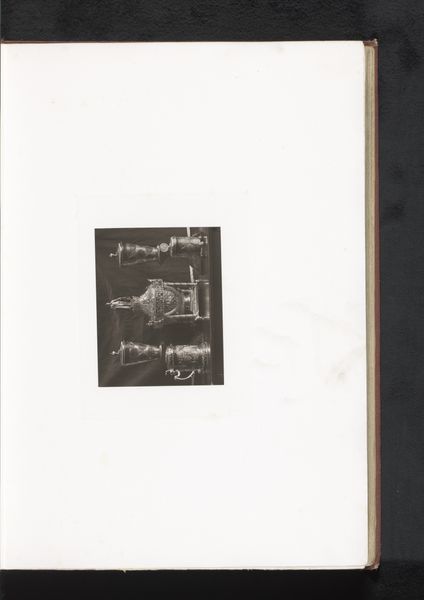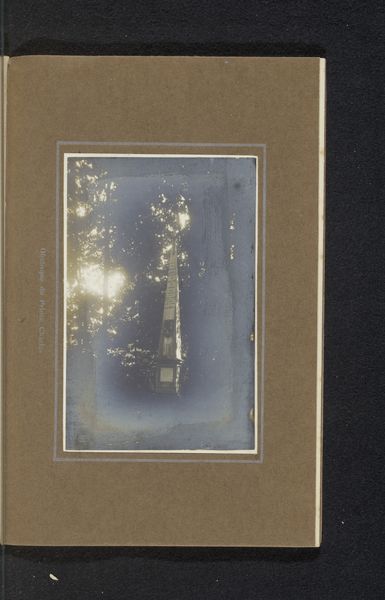
Else Wachenheimer-Moos kijkt uit het raam van een bovenverdieping, genomen vanaf een lagere verdieping, 1922-1937, Duitsland? c. 1922 - 1937
0:00
0:00
photography, gelatin-silver-print
#
portrait
#
german-expressionism
#
photography
#
gelatin-silver-print
#
genre-painting
Dimensions: height 62 mm, width 62 mm, height 81 mm, width 107 mm
Copyright: Rijks Museum: Open Domain
Curator: Let's turn our attention to this gelatin-silver print titled "Else Wachenheimer-Moos kijkt uit het raam van een bovenverdieping, genomen vanaf een lagere verdieping, 1922-1937, Duitsland?". Editor: It’s quite evocative, isn’t it? There's an undeniable sense of constraint. The greyscale emphasizes the solidity of the architecture, especially when paired with the rough materiality of the book's paper, makes it look like a candid memento from a bygone era. Curator: The photographic print, seemingly captured between 1922 and 1937, frames a figure gazing outward. It displays elements common to the German Expressionist movement, though the aesthetic application may have stemmed from the conditions or materials at the photographer's disposal. I want to focus on how the compositional structure emphasizes the figure's gaze, directing our attention beyond the depicted architectural elements. Editor: Absolutely. It almost feels accidental, as if we stumbled upon it amidst other mementos of daily life. I wonder what kind of labor produced this—were photographic materials easily accessible, or was this a deliberate process? It makes one consider the broader social conditions and available tools needed to create art. Was this intended as 'art,' or a simple domestic scene? The silver gelatin print emphasizes how materials and technologies intertwine with art making itself, transforming lived experiences into consumable visual objects. Curator: We should also note the viewpoint—we're positioned on a lower level, looking up. That framing generates a clear distinction between those enclosed indoors versus those looking out, further underscoring isolation or a longing for something beyond the self or immediate surroundings. Editor: Right. Thinking of context, what’s especially potent is the labor that likely supported it. Silver gelatin was a popular material choice and format and it likely points to something reproducible. The physical qualities—its monochrome quality, texture and apparent fragility—connect back to its process, making this feel simultaneously modern and historical. This prompts questions of artistic intention against its means of reproduction. Curator: An insightful connection. In considering this image through a formalist lens, it is about the careful construction of visual perspective that makes the personal act universal and broadly legible. Editor: Agreed. Considering both process and image, its success lies in those layered qualities.
Comments
No comments
Be the first to comment and join the conversation on the ultimate creative platform.

